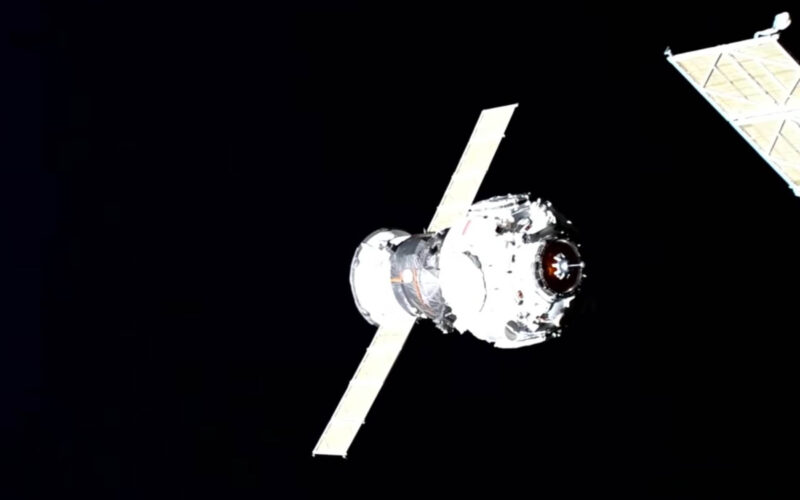Russia’s Prichal module has docked with the International Space Station (ISS), finishing the Russian side of the station and completing the most expensive aerospace project to date.
Prichal is a docking node with six points that can connect with arriving Soyuz capsules. It is set to become the primary docking station for the Russian segment of the ISS.
The module blasted off from the Baikonur Cosmodrome on November 24, and spent two days synchronizing with the ISS, before connecting with the space station on November 26, at 15:19 GMT.
“Prichal has successfully docked with the International Space Station. The Russian segment of the ISS has another module!” Russian space agency Roskosmos tweeted.
Есть касание! Есть сцепка! #Причал успешно причалил к Международной космической станции. В составе российского сегмента МКС еще один модуль!
Впереди — открытие люков, демонтаж стыковочного механизма и перевод системы электропитания «Прогресса» на объединённое питание. pic.twitter.com/7hcbmX7Beo— РОСКОСМОС (@roscosmos) November 26, 2021
Following the dramatic docking of Nauka in July 2021, Prichal is the second Russian part to reach the ISS this year, and marks the final module to be attached to the Russian segment. Initially, Roskosmos planned to add two further modules, the SPM-1 and the SPM-2, but they were repurposed for Russia’s own upcoming space station, the ROSS, which is planned for construction in the 2030s.
The other participants of the ISS program, NASA, the European Space Agency (ESA), the Japanese space agency (JAXA) and the Canadian space agency (CSA), do not have plans for any further ISS segments.
However, this does not mean that the ISS is complete. There were various commercial proposals to complement the structure with new segments, most prominently one from Axiom Space, which was approved by NASA in January 2020.
The Axiom Orbital Segment will consist of three parts, the first of which is scheduled for launch in 2024.
The segment is expected to house a new laboratory and a hotel, in line with plans to open the ISS for commercial use.
The ISS is approaching the end of its life, as the agreement between the participating agencies terminates in 2024, and, beyond that, the fate of the station remains largely unknown. Upon its eventual retirement, the Axiom’s part is supposed to detach and form the core of a new commercial space station.

